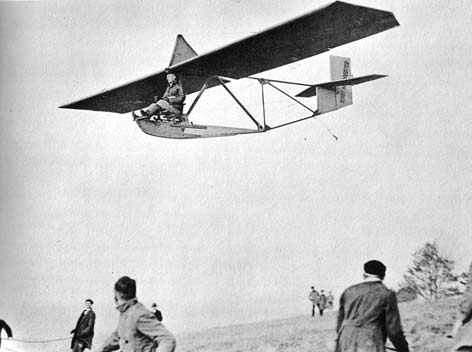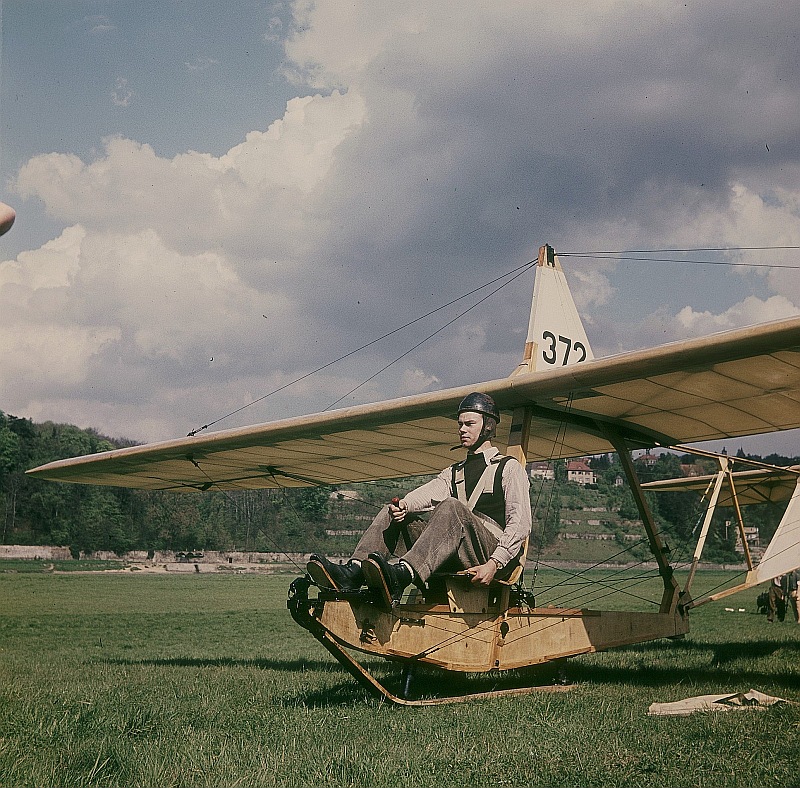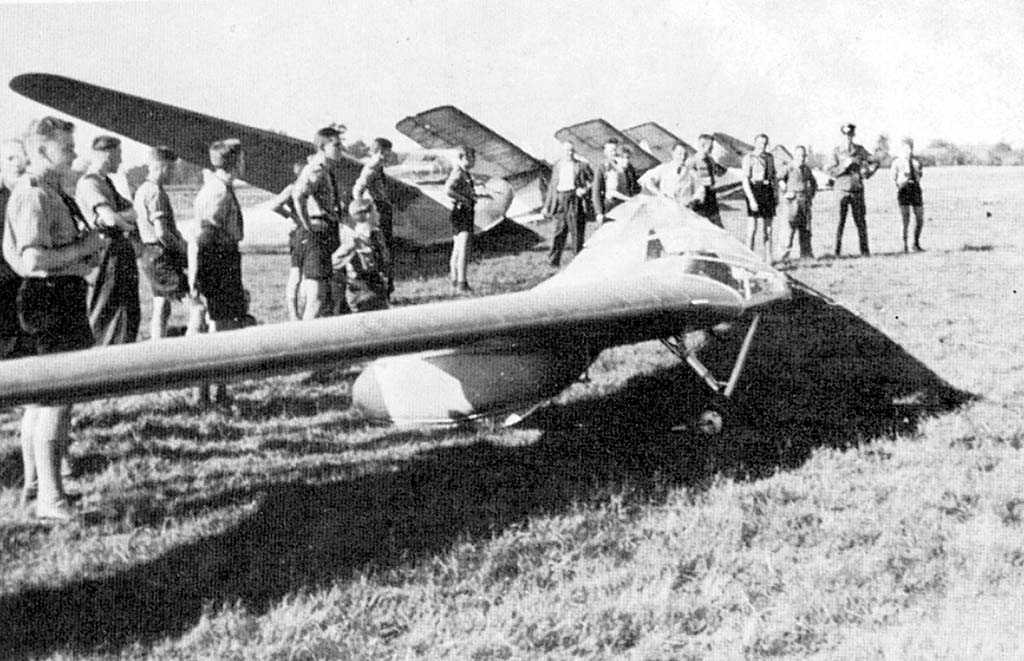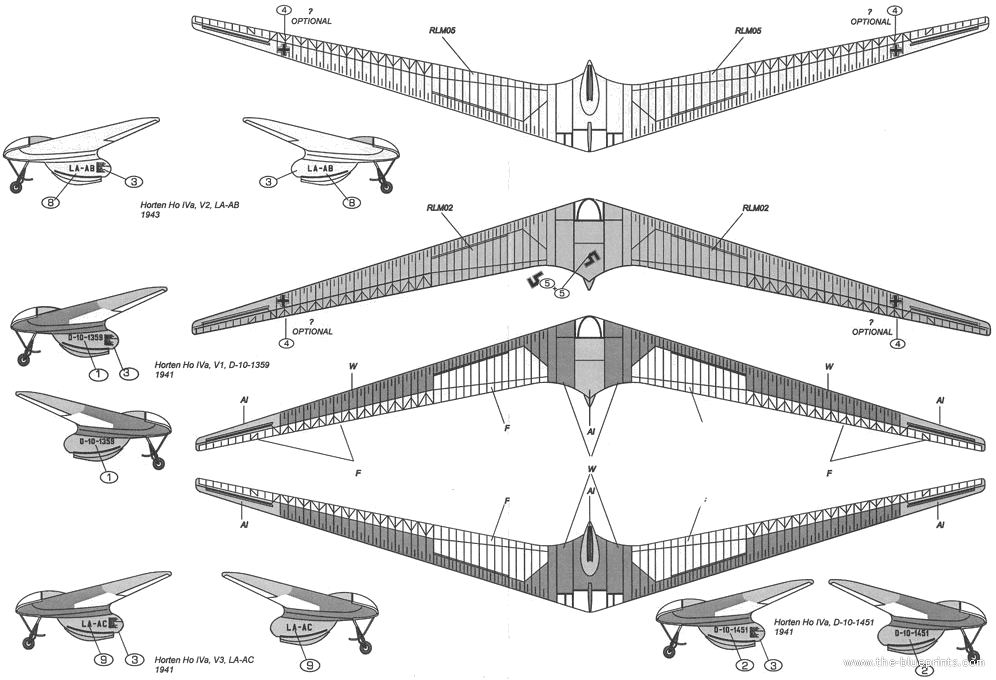How a simple, DIY-inspired design helped create the worlds most dangerous flying corps.
When World War 1 came to an end in 1918, the victorious allies took care to heavily restrict the military development of powered flight in the Treaty of Versailles. It wasn't long however, until the land of the Red Baron discovered a loophole wherein the treaty overlooked the use of unpowered flight as a military training tool. The resulting training regime used a brilliantly simple design called a Schulgleiter(English: School glider) and arguably produced the finest airmen in all of WWII (at least when evaluating individual skills alone...).
For a regime better known for engineering achievements like the ME-262 (the world's first jet fighter), than for inspired design practices as those that produced Russia's T-34 Tank or Britain's plywood Mosquito Bomber, the Schulgleiter is truly extraordinary. Officially designated the DFS-SG-38 Schulgleiter, the craft had a simple stick for steering, foot pedals for flaps and little else.
The gliders would be launched by a giant bungee chord on a mountain known as the Wasserkuppe where gentle slopes and perfect tailwinds make it the heart of German aviation to this very day. The following image shows a Schulgleiter in mid-launch position, and the 1940 vintage training video shows how the process worked.
With such ideal flight conditions, the SchulGleiter was far from the only aircraft developed at the Wasserkuppe, nor was it the only advance in unpowered flight at the time. The Horten Brothers are best known for developing the Ho-229. A jet-powered, Flying Wing with characteristics so far ahead of its time, that Northrop Grumman, designers of the B2 Stealth bomber, famously constructed a replica for the purposes of testing its stealth characteristics.
While the Ho-229 has attracted a sizable following of aircraft modelers and enthusiasts, less attention has focused on the fact that such a high-tech marvel is almost entirely derived from seemingly low-tech glider designs. Going back as far as the First World War, the Horten's had been developing the flying wing concept as a glider. Such designs might appear familiar to readers of DIYDrones, though some might warrant further research.
Of the unpowered-wings, the best known is perhaps the Horton H.IV whose extremely broad, thin wingspan was a breakthrough in tailless aircraft design.
I am highly interested to learn if other contributors to the DIYDRONES community have tested similar airfoil/wingspan designs or are aware of detailed blueprints for Horten wings or other prewar German glider designs.
Furthermore, I would like to examine where present work on DIYDrones might apply to simple manned craft like the SchulGleiter.
AFAIK the Wasserkuppe is still a popular location for Gliders and RC aircraft and currently houses the German Sailplane Museum. Please feel free to comment if you have flown at this location or are interested in the subject in general.
*This is the first post of what I hope to be a series of blog posts, tutorials and curricular guides under the hashtag #makinghistory. MH entries will examine historical antecedents to contemporary practices in the DIY, Open Source, Maker and Civic Hacking movements.








Comments
Indeed there was! Also Horten inspired no doubt.
Gary
@Gary,
I believe that there was a fictional twin pusher flying wing (Horten BV 38) in the "Raiders of the Lost Ark" Indiana Jones movie.
Regards,
TCIII AVD
BTW, any of you seen "Guardians of the Galaxy"? I enjoyed it a lot. There is something decidedly Horten-esque about the "Milano Star Ship" they tool around in.
Gary
Great article. Always important to look back as we move forward.
Nice one Bob. Correcting someone's use of their peddels (sic) and faps (sic) also makes one look like a boob... ;)
Second, the peddels are for the rudder as in most aircraft. This basic glider did not even have faps.
Other than that, nice article. But you need to be more carefull with your facts, as even one big mistake like either of these really makes you look like a boob.
Wow, didn't realize HSV was on YouTube in its entirety. I have only seen segments on there in the past.
My 15 frames of fame can be seen at 26:00 and 33:30 :-)
Gary
Hi Andrew,
I designed, built and flew a scale model of the Ho IX/229 some years ago, and later participated in the making of the NatGeo documentary, "Hitler's Stealth Fighter". I had the opportunity to meet and talk to David Myhra at length, one of few authors who met and interviewed the Horten brothers directly. I highly recommend his book, The Horten Brothers and Their All Wing Aircraft. It reads almost like a novel, I couldn't put it down.
The flying qualities of the 229 were and are amazing, but it's not a plane for inexperienced pilots :-) The model flies great, but has some quirks that will keep even the most expert pilot on his/her toes! There is a write up on my experiences developing the model on the website.
The work of the Horten brothers is fascinating, but I think sometimes a bit overrated. Many of the glider designs such as the Horten IV had handling issues which Reimar stubbornly refused to acknowledge. The same can be said of the Ho 229. However, the brothers achievement was amazing and unprecedented, especially considering their lack of formal education and the difficulties they had to work with. The influence of their design work can be seen in nearly every post-war flying wing design. I've read and heard a lot about the Wasserkuppe, I hope to visit there someday.
Gary
"How a simple, DIY-inspired design helped create the worlds most dangerous flying corps"
Most dangerous? Ya I would say history did not bear that out. The Nazis where inconsolably indifferent to the value of a human life. This is not some "feel good" idea, it is a battle field tactic that history has proven to work over and over again.
The Horton wing although a very interesting design, never proved itself useful until the advent of electronic stabilization methods became available. No flying wings are not inherently more efficient then conventional aircraft.
Yes I have great respect for the engineering that came of Germany. But most of it was due to their "lets try anything and see if it works and who cares if anyone dies in the process" techniques that naturally produce stunning results. Most of the time it was not the good type of stunning. In the end, doomed to fail.
-
1
-
2
-
3
of 3 Next